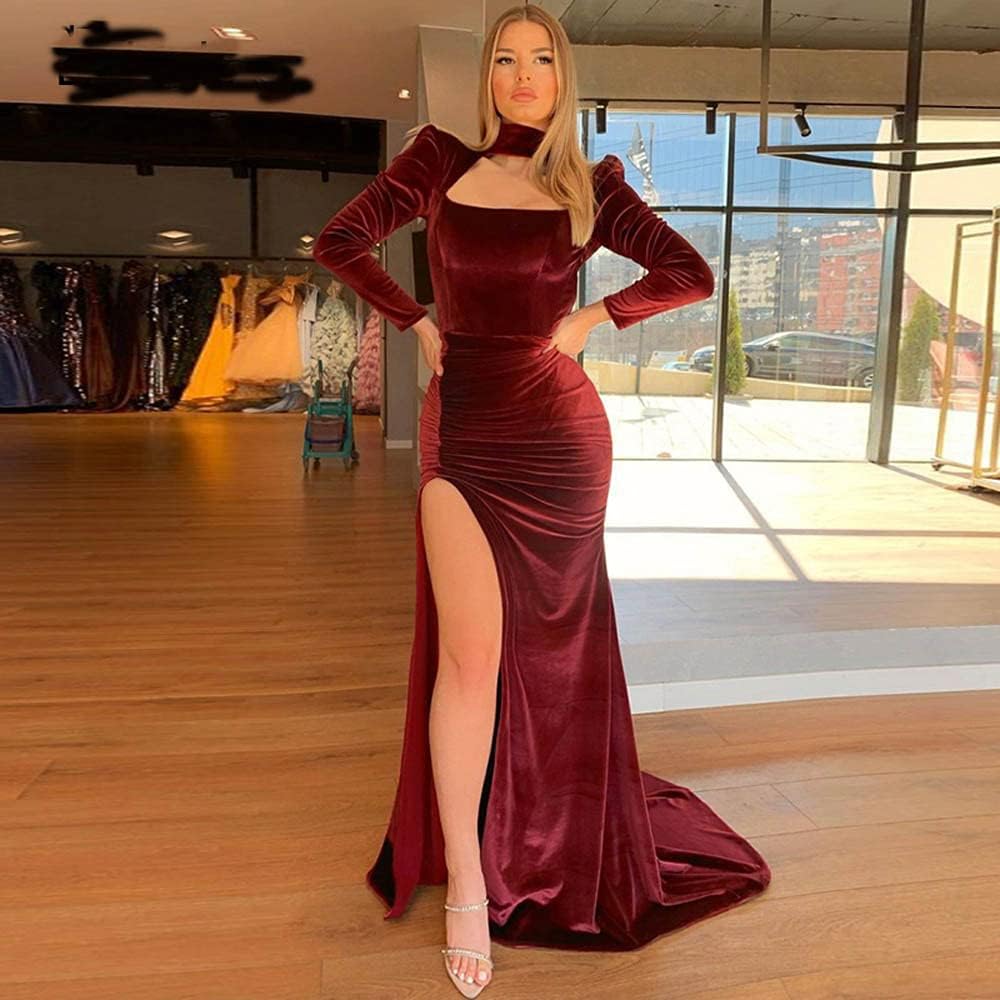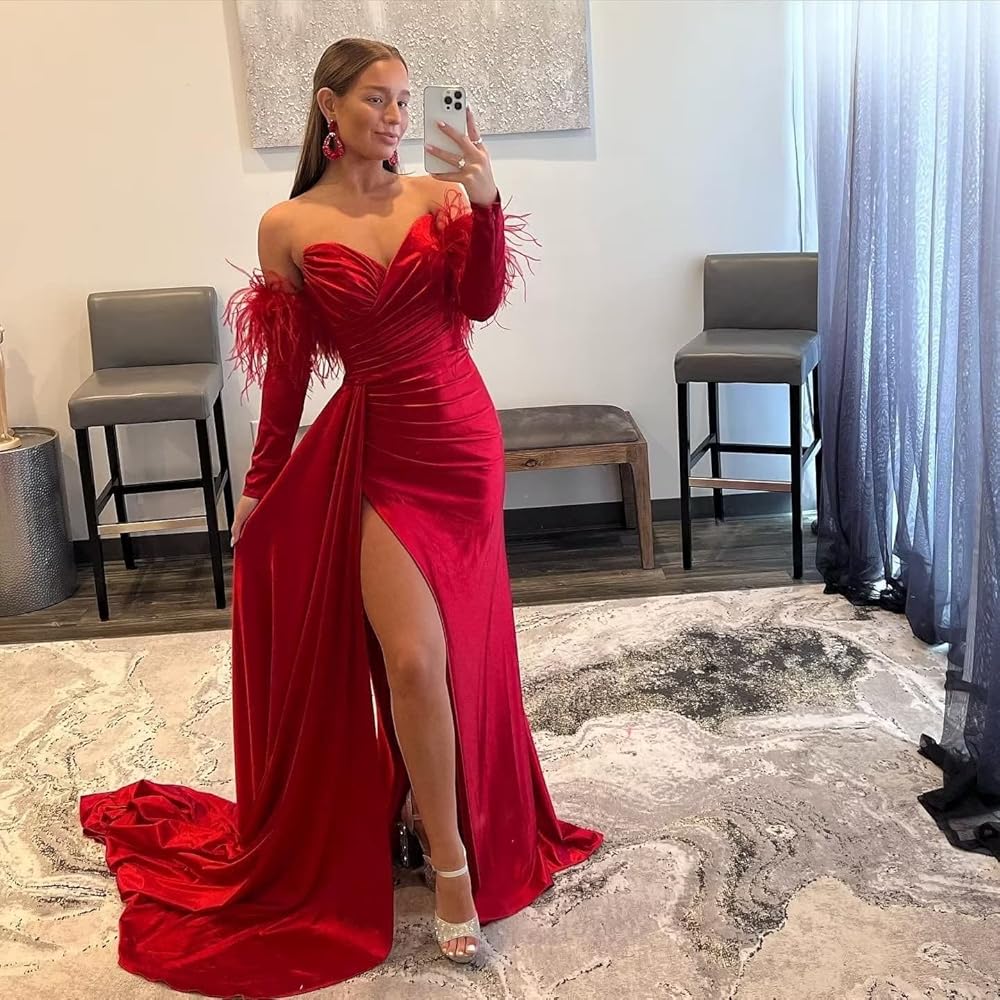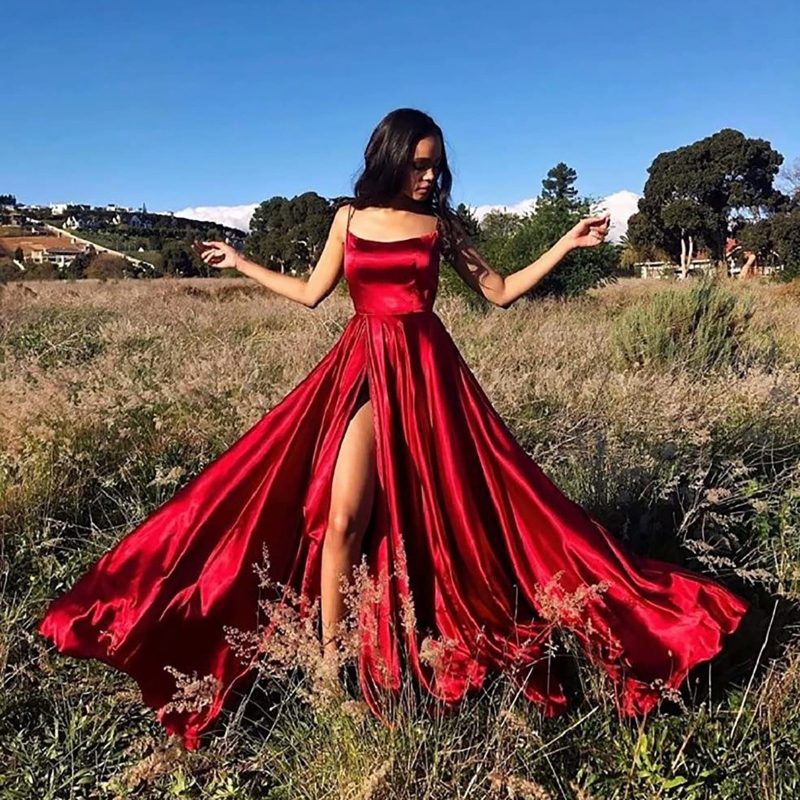Introduction
Velvet, with its lustrous sheen and sumptuous texture, has long been associated with opulence and luxury. When it comes to formal attire, velvet formal dresses are the epitome of elegance, gracing red carpets, black-tie events, and gala evenings with a regal charm that is hard to rival. This guide explores the allure of velvet dresses, their historical significance, modern interpretations, styling tips, and how to choose the perfect one for your next grand occasion.
Historical Significance and Timeless Appeal
Velvet’s origins date back to the Middle Ages, where it was reserved for royal and noble attire due to its high production cost and exquisite appearance. Over centuries, it has retained its status as a fabric of luxury, symbolizing wealth and prestige. In the realm of formal wear, velvet dresses have been a mainstay, adorning women through various eras, from the regal gowns of Renaissance courts to the glamorous flapper dresses of the 1920s. Today, they continue to evoke a sense of classic glamour and sophistication.
The Magic of Velvet: Texture and Color
The unique appeal of velvet formal dresses lies in their tactile qualities. The plush pile of the fabric catches light beautifully, creating a soft glow that seems to shift with every movement. Its rich texture adds depth to any hue, making colors appear more vivid and saturated. Deep jewel tones like emerald green, sapphire blue, and ruby red are popular choices for their ability to exude drama and luxury. Neutral shades like black, navy, and dark burgundy offer a more understated elegance.
Modern Interpretations and Silhouettes
While velvet dresses harken back to a bygone era, contemporary designers have reimagined them in various modern silhouettes. From sleek column dresses that hug the body elegantly to voluminous ball gowns that swirl with dramatic flair, the versatility of velvet allows for endless design possibilities. Figure-flattering wrap dresses, romantic off-the-shoulder styles, and chic midi lengths with high slits are just a few examples of how velvet has been updated for the modern woman.
Styling Velvet Formal Dresses
Styling a velvet dress requires a delicate balance between enhancing its inherent glamour and avoiding over-accessorizing. Opt for minimalist jewelry to let the dress shine—think delicate earrings or a single statement bracelet. Pair with strappy heels or elegant pumps in a complementary color to elongate the legs. For cooler evenings, a tailored blazer or a silk shawl can add a touch of sophistication without overwhelming the look. Keep makeup and hair simple yet polished to complete the ensemble.
Choosing the Perfect Velvet Dress
When selecting a velvet formal dress, consider several factors to ensure it complements your body type and the event’s formality:
- Body Type: A-line and empire waist styles flatter most figures, while wrap dresses accentuate the waistline beautifully. Hourglass shapes can embrace form-fitting cuts, while apple-shaped bodies may prefer dresses that skim over the midsection.
- Event Formality: Longer lengths and richer hues are typically more suitable for ultra-formal events, while shorter styles or pastel shades can work for semi-formal gatherings.
- Personal Style: Choose a dress that reflects your personality. If you lean towards classic elegance, opt for a simple silhouette in a rich color. If you’re more adventurous, explore dresses with intricate details, bold patterns, or unexpected cuts.
Maintenance and Care
To preserve the beauty of your velvet dress, proper care is crucial. Always follow the garment’s care label instructions. Many velvet pieces require dry cleaning to maintain their texture and color. Avoid hanging velvet, as this can cause stretching; instead, fold gently and store in a cool, dry place.

A Brief History of Velvet
Velvet, with its soft pile and luxurious feel, has a storied history dating back centuries. Originating in the Middle East during the medieval period, velvet was initially crafted from silk, making it a fabric reserved for royalty and nobility due to its expense and labor-intensive production process. Over time, advancements in weaving techniques allowed for the creation of velvet from cotton and synthetic fibers, democratizing its availability and popularity.
The Timeless Appeal of Velvet Formal Dresses
Luxurious Texture and Feel:
- Velvet’s plush texture and subtle sheen create a sense of opulence that is unmatched by other fabrics. Its tactile quality invites touch and adds depth to any ensemble, making it ideal for formal occasions.
Versatility in Design:
- From sleek sheath dresses to flowing gowns, velvet lends itself to a variety of styles and silhouettes. Whether adorned with intricate beadwork, lace accents, or minimalist tailoring, velvet dresses can be tailored to suit individual tastes and preferences.
Seasonal Versatility:
- While traditionally associated with cooler months due to its insulating properties, velvet has transcended seasonal boundaries. Lightweight velvet blends and designs featuring strategic cutouts or breathable fabrics allow for year-round wear, making it a versatile choice for formal events regardless of the weather.
Types of Velvet and Their Characteristics
Silk Velvet:
- Known for its unparalleled softness and luminous finish, silk velvet remains the epitome of luxury. Its natural drape and fluidity make it ideal for flowing gowns and dresses that demand movement and grace.
Cotton Velvet:
- More accessible and durable than its silk counterpart, cotton velvet offers a matte appearance with a subtle sheen. It is prized for its breathability and is often used in structured designs that require a firmer silhouette.
Synthetic Velvets:
- Polyester and nylon blends offer affordability and versatility without compromising on texture or appearance. These fabrics are often chosen for their durability and ease of care, making them suitable for modern lifestyles.
Styling Tips for Velvet Formal Dresses
Choosing the Right Color:
- Jewel tones such as deep emerald, ruby red, and sapphire blue enhance velvet’s luxurious appeal. Neutral hues like black, navy, and charcoal gray offer timeless sophistication and can be effortlessly accessorized.
Accessorizing with Elegance:
- Opt for statement jewelry such as chandelier earrings or a bold necklace to complement the richness of velvet. Metallic accents in gold or silver add a touch of glamour without overpowering the ensemble.
Footwear and Outerwear:
- Pair velvet dresses with classic pumps or strappy heels for a refined look. A tailored coat or velvet blazer can provide warmth and elevate the ensemble, especially during cooler seasons.
Hair and Makeup:
- Balance the opulence of velvet with a polished hairstyle and makeup. Soft waves or an elegant updo paired with subtle, sophisticated makeup enhances the overall elegance of the look.
Care and Maintenance
To preserve the beauty and longevity of velvet formal dresses:
- Dry Cleaning: Due to its delicate nature, velvet should typically be dry cleaned to maintain its texture and color vibrancy.
- Storage: Store velvet garments in a cool, dry place away from direct sunlight to prevent crushing or fading.
- Steaming: Use a garment steamer on the lowest setting to remove wrinkles and restore the fabric’s plush appearance.
Embracing Timeless Glamour
Velvet formal dresses epitomize timeless glamour and sophistication, offering a blend of luxury, versatility, and classic appeal. Whether attending a gala, a wedding, or a special evening event, embracing velvet allows you to make a statement with grace and style. Discover the allure of velvet formal dresses and elevate your evening attire with pieces that embody elegance and enchantment.

In conclusion
Velvet formal dresses are a testament to timeless elegance, combining history, luxury, and modernity into a single stunning garment. Whether attending a formal gala or a sophisticated dinner party, a well-chosen velvet dress guarantees a memorable entrance and a lasting impression of refined glamour.
